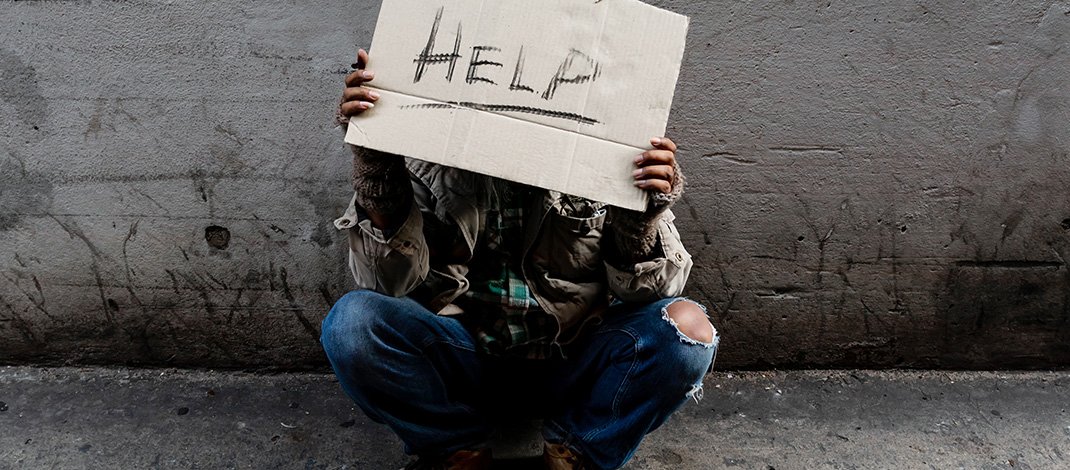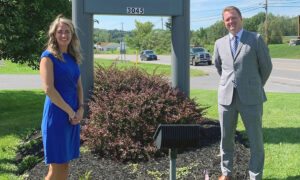County, which is mostly rural, sees a 79% increase in homeless people in the last year. Experts expect problem to get worse
By Stefan Yablonski
Homelessness in Oswego County has been increasing in recent years — and it is expected to increase even more next year.
Oswego County is part of a homelessness response system called the continuum of care, which coordinates and implements the homelessness services response system for Onondaga, Cayuga, and Oswego counties.
The Housing and Homeless Coalition of CNY is a community collaborative, acting as the continuum of care for homelessness services. Its mission is to assess community needs and develop a community strategy and coordinated network of services to reduce, prevent and ultimately end homelessness and housing vulnerability in Central New York.
“Everyone deserves a safe place to call home,” according to Megan Stuart, director of the Housing and Homeless Coalition of CNY.
Oswego County saw a 79% increase in homeless people in the last year, Stuart said.
“The number of homeless people in Oswego County jumped from 76 in 2022 to 136 in 2023,” she said, adding, “Using 2019 as a benchmark, this number has increased by 161%.”
It’s a reflection of the ever-growing crisis that is facing the state and nation. But Oswego County is not as bad off as many locales around the country, she said.
More than no shelter
Tackling homelessness “is a complex, systemic issue that takes all members of the community to solve,” according to Stuart. Homelessness isn’t just the absence of shelter, she added. There are myriad factors such as job loss, low wages and a high cost of living, which can force people into a homelessness situation.
“Homelessness, in general, is a societal problem,” she said. “Across the country there are systemic challenges facing people seeking and obtaining permanent housing. There is a lot that contributes to it. Calling it a societal challenge is very fitting.”
Things were exasperated during COVID-19. People weren’t being evicted; there were rental clauses where people didn’t have to pay rent. But people were losing their jobs and people were medically impacted by COVID-19, she pointed out.
“It’s resulted in an increase now in homelessness — it created a perfect storm,” she said.
Point In Time
The coalition is responsible for a Point In Time survey every January. The above data is from January 2023.
“Anecdotally, I can say that we’re seeing increases. I think we’re going to surpass that number. We’ll be higher when we conduct our count in 2024. It’s not good,” she said.
Stuart pointed to some challenges: the cost of housing has gone up, the amount of housing is less, people sold houses and took them off the market and some places are old and condemned.
“So we are definitely expecting more people to be homeless in our next survey, on that night when we conduct that count,” she said. “We have to conduct it. It is a HUD requirement — we have to do it within the last 10 days of January. We partner with OCO to get volunteers to help us — we cover three counties with the coalition — Onondaga, Cayuga and Oswego — so we partner with them to help get the count.”
The population, living on the streets in tents or cardboard boxes is really the minority, she said.
“Only 5% of people [on the last Point In Time night] were what we consider chronically homeless, which means they have experienced homelessness four times in the past three years,” she explained.
“Couch surfing — yes, we see that a lot with youth. When we post our numbers, we are talking specifically about people who are outside or in an emergency shelter paid for by DSS or an organization like OCO,” she added. “That couch-surfing number is rising, too. It’s not something we capture good data on because it’s kind of a hidden population.”
Stuart said 10% of Oswego County’s homeless population is younger than 25.
There are a lot of issues that go into youth homelessness — disagreements with family members, not having a support structure in place, people coming out of foster care and not having places to go.
“It’s hard for youth who have never had an apartment to try to navigate that in the first place — where do you go, how do you talk to a landlord how do you fill out a rental application,” she said. “The rent can be unaffordable for a lot of people, especially young people these days.”
Rural vs. urban
Homelessness in rural areas, such as Oswego County, can be difficult to see because of how “hidden” it is, according to Stuart.
“In larger urban areas, you’ll see homeless people out on the streets. In rural areas, homeless people tend to stay in private areas. It is common for homeless people in rural areas to, like you said, ‘couch surf.’ They live in other people’s homes when they can because they do not have a place of their own,” she said.
“You hit the nail on the head, mentioning the difference between rural and urban. I think there are challenges for the rural community trying to end homelessness because it’s really hard to get a good scope of what the issue is,” she added. “There is a lot of geographic area; there are a lot of places people can tuck away and not get connected with services. In a more urban community, it’s pretty obvious. You can find people; they are usually congregating in certain places.
“Especially in Oswego County — it’s geographically large — there’s a lot of ground to cover for services providers to make sure that they are available for folks from one end of the county to the other.”
Members of the coalition try to find those that are sleeping outside and try to get them inside because that is the most important thing, according to Stuart.
“We’re heading into winter and our biggest focus is making sure people are inside and safe,” she said. “I think for us at the coalition, I think our solution is always going to be more housing, housing that is affordable. With projects in Oswego County that have been completed, like Champlain Commons, they are just so successful in getting people into safe, stable apartments that they can afford and that is what’s really going to move the needle.
“We are really appreciative that the state has made some investment into housing development; especially in our region because we do have a lot of aging housing stock. We are losing houses to nothing other than age and not being taken care of. We need new housing to really come in and be affordable — we need options for working families, people who get public benefits, so they can be able to afford a place to live. Otherwise, this issue is just going to keep growing.”
The state has put a lot of investment into development; there are some federal programs as well. “It’s a lot for a local government to take on. It really has to come from the state and federal levels,” Stuart said. “What we hope at the local level is that people support it and recognize that these projects ultimately help our neighbors. They aren’t helping people who are not deserving; they are not helping people coming from other communities — these are people from our neighborhoods our communities.”
They collect people’s zip codes when they come into shelter and “we can prove these are people who live in your neighborhood — whether they are in a nice apartment or not and isn’t it better if they are in a nice apartment? There is a lot of education that needs to get out there. The amount of people using illegal substances is really low — it is less than 10% of people. Most people find themselves homeless because of their economic circumstances,” Stuart said. “I think we have a really good collaborative community, which is very nice. We have a lot of good things going for us. This is encouraging.”
Housing and Homeless Coalition of CNY
Homelessness in Oswego County at a Glance
• 60% of people in emergency shelters stay less than 30 days
• Approximately 50% of people experiencing homelessness report having a disabling condition
• Less than 10% of people experiencing homelessness report misusing substances like alcohol or drugs
• 23% of households experiencing homelessness have at least one child
• In 2022, only 3% of people experiencing homelessness were sleeping outside
• Veterans make up approximately 1% of the homeless population
• 5% of the homeless population is chronically homeless
• 10% of the homeless population is youth younger than the age of 25
PIT Survey Identifies Needs of County’s Homeless Population
In January 2023 Oswego County Opportunities in conjunction with the Housing and Homeless Coalition of Central New York conducted its annual Point In Time count.
Point In Time is a count of sheltered and unsheltered people experiencing homelessness on a single night during the last 10 days of January.
“Point In Time canvassing gives us much more than a count of homeless individuals, it’s an excellent opportunity for outreach,” said OCO Homeless Services Coordinator Jill Brzuszkiewicz. “During our canvassing we were able to speak with business owners and community partners and share with them information about homelessness in Oswego County and how they can help by letting them know about the services that are available to those that are homeless and how they may connect someone that is in need to those services.”
Volunteers from a number of OCO partners including the Oswego County/City Youth Bureau, Farnham Family Services, DSS, SUNY Upstate Medical University, the Housing and Homeless Coalition of Central New York, Densens House, the City of Fulton Police Department, OCO board members, community members and other OCO staff canvassed areas throughout the county.
Traveling in pairs, volunteers search for people experiencing unsheltered homelessness and help those individuals find shelter for the night and connect them with homeless services that may help find more permanent housing.
For more information on OCO’s Homeless Services call 315- 342-7618 or visit oco.org.




